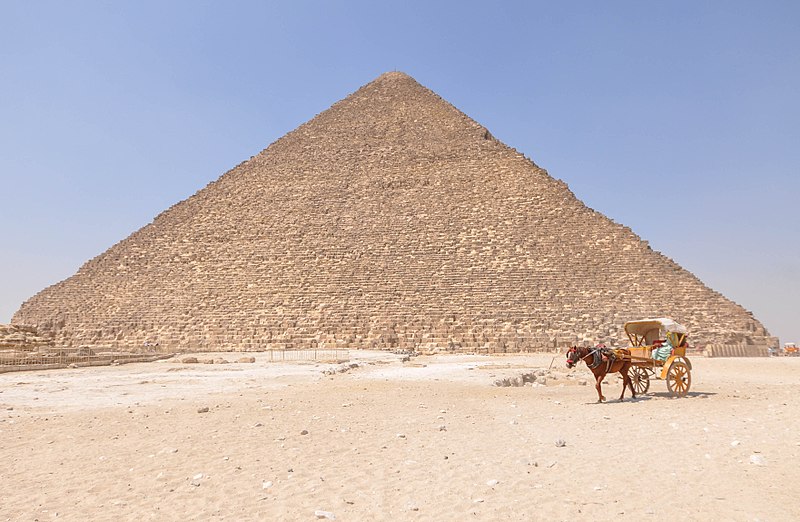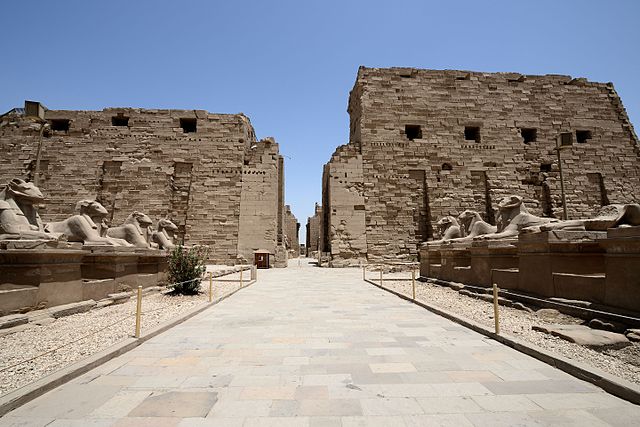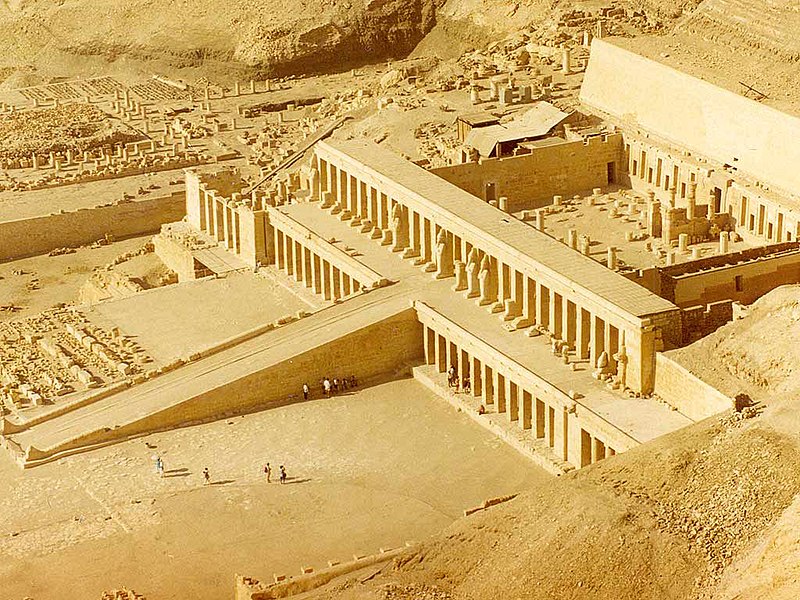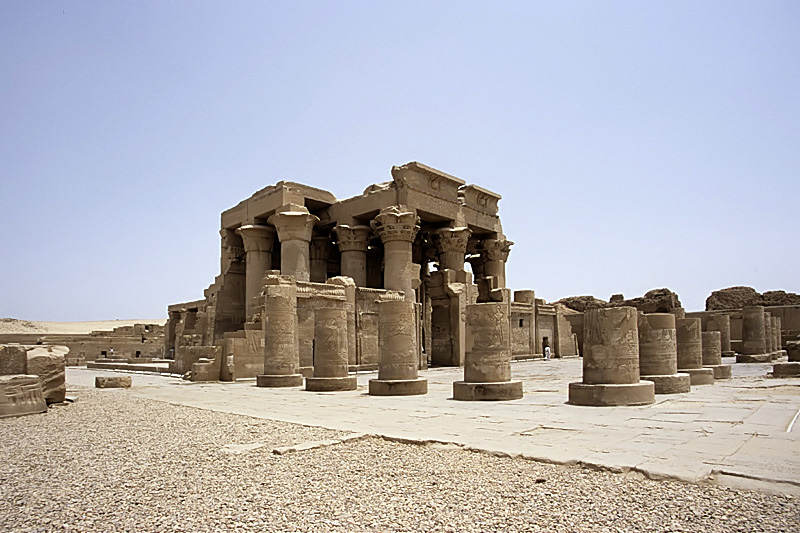Egypt gifted the world with one of the oldest civilizations in the world, and so has contributed a great deal to human history.
From the discovery of paper and ink, to the irrigation system, the ox-drawn plough, the sickle, to the toothbrush and toothpaste, modern human history has a lot to be grateful for to Ancient Egyptians.
Of course, there’s also the magnificent structures that are the pyramids, showcasing man’s technical skills and craftsmanship.
They’ve done such a great job of the pyramids that they, in fact, remain standing tall up to today, and are recognized as one of the Seven Wonders of the Ancient World.
This article will explore the many other famous buildings in Egypt, showcasing this very craftsmanship. And because this list mostly involves Ancient Egyptian structures, we will also be looking at the historical facts and myths that come along with each of them.
Famous Buildings in Egypt
1. Luxor Temple

The Luxor Temple in the city of Thebes, on the Nile River’s east bank, has been a recognized UNESCO World Heritage since 1979.
Centuries prior to this designation, however, it was a well-known complex of Egyptian temples, dating all the way back from 1400 BCE, approximately.
What makes Luxor Temple different from most other Ancient Egyptian temples is its primary function.
Also Read: Famous Landmarks in Egypt
Whereas other temples were used to revere cult gods or deified pharaohs, the Luxor Temple was instead used for the pharaoh’s ascension to the throne.
Built with Nubian sandstone, the Luxor Temple remains to be a sight to behold, with towering sculptures in and around the complex.
Among the most notable ones are the statues of Ramses II at the entrance of the temple, as well as the Avenue of Sphinxes.
2. Great Pyramid of Giza

The Great Pyramid of Giza is one of the most sought-after destinations of many tourists from all over the world.
After all, not only is it one of the Seven Wonders of the Ancient World, it is the oldest among them all, having been built over 1,200 years even before King Tut ruled.
The Great Pyramid is not actually in Giza, but rather, just outside of it. At its original height of 146.5 m (481 ft), it was considered to be the tallest man-made structure in the world for some 4,000 years.
Today, however, its height measurement shows it has lost 9.5 m (31 ft), and now stands at 137 m.
Today, visitors can enjoy and explore the pyramids for a fee, whether as a solo traveler or as part of a tour group.
Those who can’t go there in the meantime can look it up via satellite. The structures are big enough to be seen from outer space, and have been constantly the subject of many satellite photos.
3. Karnak

Like the Luxor Temple, Karnak is also part of the UNESCO World Heritage List along with others within the city of Thebes. With its collection of decayed temples in its complex, it is believed to be the second most visited site in Egypt, only after the Great Pyramids of Giza.
While there are many interesting archaeological sites that can be found here, one of the most popular is the Great Hypostle Hall. It’s a sight to behold with 134 massive columns arranged in rows.
Another interesting thing to note about Karnak is that its construction spanned many years. In fact, it is believed that around 30 pharaohs got to experience and incorporate their revisions into the building of Karnak.
4. Mortuary Temple of Hatshepsut

Hatshepsut’s Temple is renowned as a masterpiece of ancient architecture, not only in Egypt but throughout the world.
The temple, designed to blend in with its natural environment, featured three levels of terraces. It would be noted that the temple design itself was inspired by the mortuary temple of Mentuhotep II.
As history would have it, Hatshepsut was a fan of his temple and so wanted to have one for herself, but grander in every aspect.
For example, while Mentuhotep II’s temple had a large stone ramp running all the way from the courtyard and up to the second level, Hatshepsut’s version of the ramp ran through lush gardens, complete with enormous obelisks overlooking the entrance pylon.
She also had two reflecting pools and sphinxes along the way that guided visitors to the third level of the structure.
5. Pyramid of Djoser

Otherwise known as the Step Pyramid of Djoser, this archaeological site features six tiers and four sides, and is renowned as the earliest colossal stone building from Ancient Egypt.
While visitors today will instead see what looks like rough slabs of stones stacked upon each other, the Pyramid of Djoser was, actually, originally wrapped in polished white limestone.
As the first ever pyramid built, the Djoser Pyramid holds a very important and revered spot in the world’s ancient history. Not only was it the first, it was also designed by no less than one of the most important architects in history, Imhotep.
It was also built with a very specific purpose, being known as the necropolis or “city of the dead” of Saqqara. This type of structure, with this specific functionality, would eventually become the blueprint for how the rest of ancient Egyptian history catered to their dead royals.
6. Cairo Tower

The Cairo Tower stands tall and proud in Egypt’s modern-day capital of Cairo. At 187 m (613.51 ft.), it is well known for the most beautiful and spectacular panoramic views of the city.
Egyptian architect Naoum Chebib designed the tower with elaborate lattice work, which was reportedly intended to depict the lotus plant, significant to the pharaohs of old.
The whole tower was constructed for five years, from 1956 to 1961.
7. Saint Catherine’s Monastery

Saint Catherine’s Monastery is of the Eastern Orthodox faith, and sits at the foot of Mount Sinai in Egypt.
The monastery, named after Catherine of Alexandria, is also known as the oldest continually operating library in the world, having been founded in 527 by Emperor Justinian 1 of the Byzantine era.
This means that it houses some of the rarest and unique books of all time, including the Codex Sinaiticus and the Syriac Sinaiticus.
It is also said that the monastery may possibly have the largest collection of the early icons of Christianity, not least of which is the Pantocrator, or the earliest known depiction of Jesus Christ.
8. Giza Necropolis

The Giza Necropolis is a pyramid complex where the three great pyramids can be found: the Pyramid of Giza, the Pyramid of Khafre, and the Pyramid of Menkaure. The complex is also home to the Great Sphinx of Giza.
This popular attraction, however, houses more than just these more famous attractions. Numerous other burial places can also be found here as well, including tombs of nobles.
The Solar Boat Museum is also found within the Giza Necropolis, where visitors can better understand how the bodies of the pharaohs were transported to the pyramids using boats.
9. Manial Palace

The Manial Palace was built from 1899 to 1929 by Prince Mohammed Ali Tewfik. The palace, lavishly decorated to reflect the modern tastes of that time, incorporated European Art Nouveau and Rococo with more traditional Islamic architecture styles, such as Ottoman, Persian, and Arab Andalusian.
Within the palace grounds sits a residential compound featuring five buildings, all showcasing unique and distinctive styles of their own. Outdoors, gardens styled according to Persian and English landscape aesthetics give a refreshing sight for the eyes.
Today, the Manial Palace, including the residential estate, is recognized as a public art and history museum.
10. Temple of Kom Ombo

The Temple of Kom Ombo, built in 180-47 BC during the Ptolemaic dynasty, can be found in the Aswan Governorate in Upper Egypt.
This structure is unique in that it features a double temple, unusual in its design and function according to standards of the time.
This double temple refers to its dedication to two different deities, namely the Sobek (the crocodile-headed god), and Horus the Elder (the falcon-headed god), also known as the first “god of the Kingdom.”
According to history, the locals of the Kom Ombo village believed that worshiping Sobek would protect them from crocodile attacks. During that time, the River Nile was teeming with these reptiles, and so brought a lot of fear to the villagers.
Today, you can visit the Temple of Kom Ombo worry-free, as there are no longer any crocodiles wandering about. You can, however, find hundreds of them mummified and displayed in the Crocodile Museum within the temple grounds.

